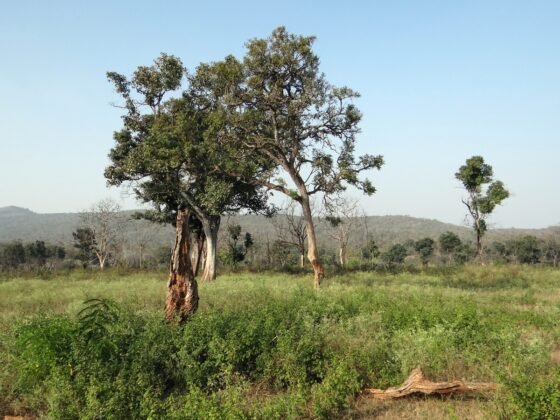Table of Contents Show
Even though trees provide dimension, color, and shade to your garden, wildlife habitat, and much more, some circumstances may leave you no choice but get rid of that tree from your garden.

For instance, larger trees may grow too big and quickly destroying sidewalks and overshadowing other plants in your garden. Other trees may be an exotic species that retch native varieties or even propagate widely.
Generally, there are a variety of reasons why you would want to get rid of a tree, may it be dead or alive. However, the main question here is, how do you do that? Continue reading to learn more.
Read Also:
Check on Permit
Trees are protected by the law that is by Tree Preservation Orders if they exist in a conservation area or have an existing covenant. To find out if the tree you intend to remove has any restriction, get in touch with your local authority.
However, it is important to involve a tree consultant, arboriculture consultant, before removing the tree.
How is this of help? A certified consultant comes in handy to help you acquire a permit and render a wide range of opinions on the effects of removing the intended tree(s). Some of the things to be considered include:
- Tree type
- How close to your house the tree is
- The type of soil you have
- Its effect on the surrounding environment
It is not obvious that you must get a tree removal permit to get rid of a tree from your garden, but remember you can appeal, and if the reasons earlier presented are valid, you win yourself a permit. If the job is immense, you will need to hire a contractor to do the job for you.
If it is a small job that you can handle by yourself, follow the following steps to remove the tree completely from your garden.
Safety
Before you chop down any tree, you have to make sure you and everything else around the working area is safe. Take all the necessary precautions to avoid injuries. Therefore you will need gears like; helmet, respirator, gloves, safety goggles, and protective caps.
After ensuring all your gears are set and in place, the next step is to clear the tree environment. Please make sure there are no children or pets; you need to inform your neighbors so that they can keep the distance.
The third step is to determine the most suitable side to fall the tree. The side with less to no destruction is the most appropriate. Determining which side the tree will fall guides you on how to chop it.
What if the tree falls to the wrong side? It is important to have a different escape route just in case of an emergency. This means that under any circumstance the tree falls to a different side apart from that you intend it to, you can escape safely.
Cutting the Tree
After considering all the above safety measures, now it’s time you cut the tree. On the side of the tree, make an angled cut approximately 70 degrees. When doing this, you should be standing, and your left shoulder is touching the tree.
Once you have made the angular cut towards the side you choose to fall the tree, make a horizontal back cut from the side. Make it as flat as possible to make the fall more predictable. Leave a small hinge to control how your tree falls.
Since you had earlier planned your escape route, once the time is right to fall back towards your first escape route. In case the tree falls towards you, go for the second escape route.
Stump Grinding
Since you want to get rid of the tree completely, use a shovel to expose the tree roots, and dig the stamp out, cut the root using a root saw. You can compost them if you need them recycled.
If the stump is too large, try other methods like chemical stump remove or burn the stump out. However, this will depend if it is permitted in your area.
The first, second, and third methods might be tiring. The use of the stump grinder is quicker, but it is more expensive than the earlier discussed methods.
Clearance
This is where you determine what to do with your disposable tree. If it is huge enough and you don’t have the right machines and equipment to get the work done, hire, or get help from the most reliable tree service provider in your area.
In this section, you chop the wood, clear the debris and clean the area you have cut the tree. Doing it yourself is cost-friendly. This will save you 30-50% in comparison to what a tree service will charge you. Sell the firewood for profit.
Reasons behind Tree Removal
There are various reasons why one may decide to remove a tree from his/her garden. One major reason is to curve the root subsidence in the surrounding buildings. That is, if the tree grows way near the construction, this may damage the foundation.
The tree may also impose danger in case of storms by falling on the house causing more damages.
Another reason may be due to aesthetic, to minimize the impact caused by the seed or leaves from the trees. Or rather do away with wildlife animals living within or in the tree.
Despite our skepticism, getting rid of the tree is of the best interest when the tree is dying, damaged, or diseased. If the tree poses a danger to a garden, a road path, or a nearby house, it’s worth being removed.
Alternatives to Tree Removal
If a tree poses more danger to the surrounding areas, removing it should be the immediate solution, however, if it’s less dangerous, pruning, pollarding, disease treatment, and other relevant alternatives might be a suitable remedy.
If you don’t know what to do with your tree, you can talk to a tree consultant or advisor for guidance on how to manage a problematic tree. However, ensure you get the most reliable and certified surgeon or arborist to execute all major works on your tree to resolve the problem.









